Gwent beta impressions from a Witcher card game obsessee
You may recognize Gwent as the card game from The Witcher 3, but boy has it changed.
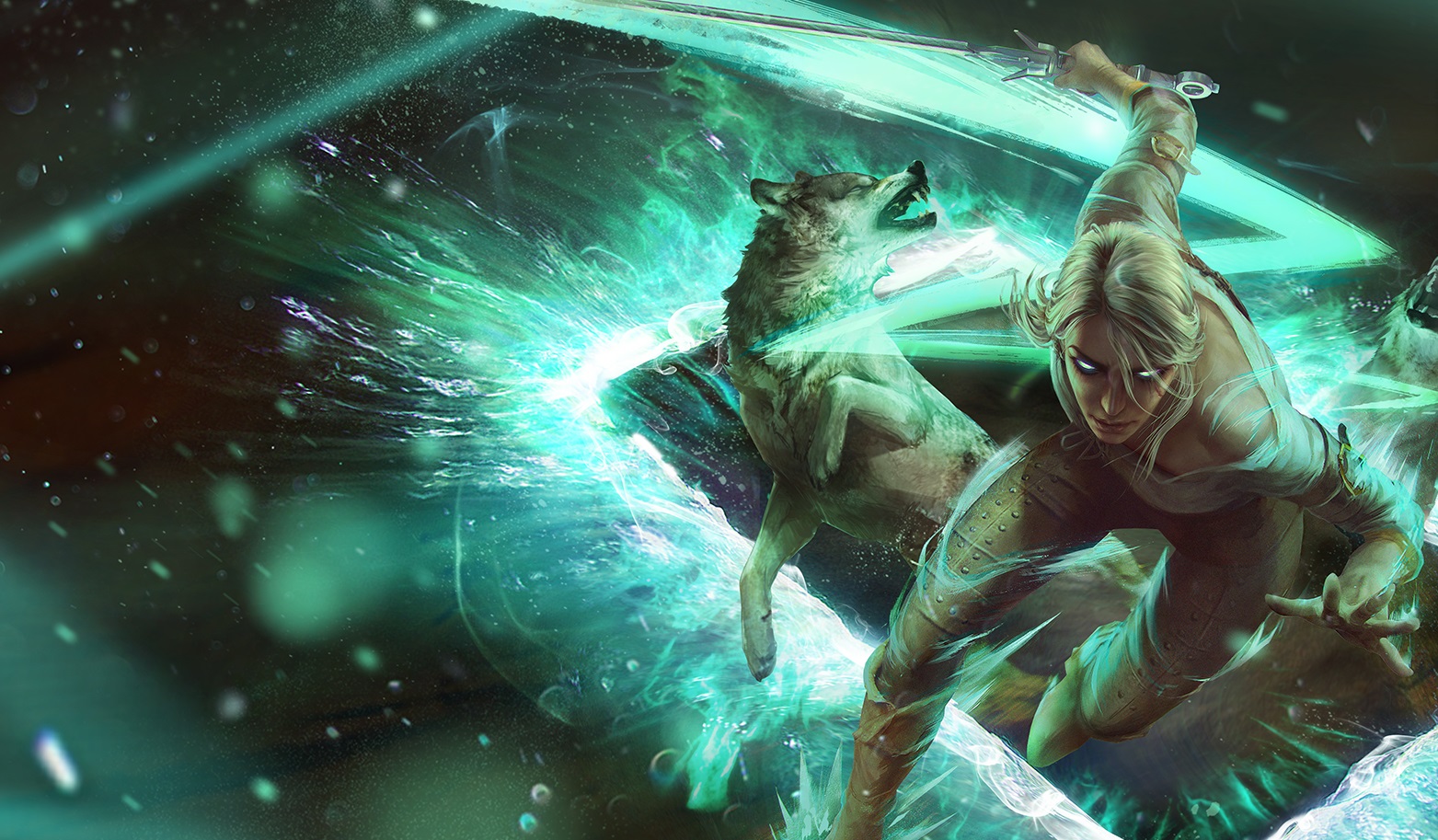
I thought I was prepared for Gwent to change on its journey from diverting Witcher 3 minigame to full human-vs-human competitive card game, but three days into the beta I'm still adapting to how different the experience is. The Gwent I'm playing now looks and feels dramatically different to the one we wrote about in our recent magazine preview just a few weeks ago.
Geralt is still a mighty gold card, immune from most status effects. Weather effects that lower the damage of entire rows of units and Commanders Horns that double their strength are still powerful. But most of Gwent is either completely new, or has been twisted enough from the Gwent of old that even experienced Witcher vets are going to be learning how to play alongside newcomers. I can’t say if there's enough depth or sophistication here to make Hearthstone sweat, but there’s definitely a strong start: it's fun enough that I'm going to play a round as soon as I finish writing this sentence.
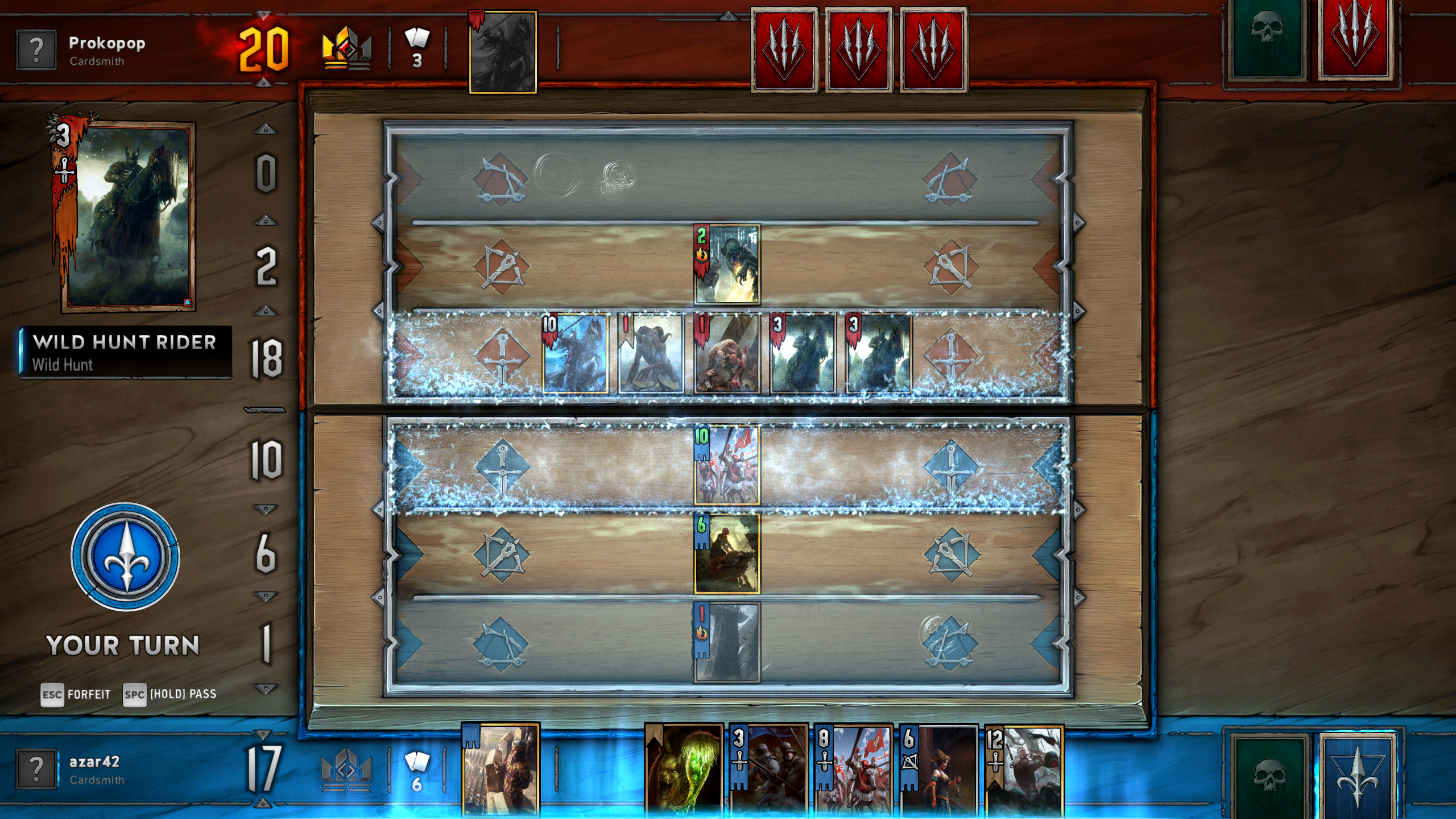
Aaaand thankfully I won—otherwise the rest of this article might've been me whining about how unbalanced Gwent is and who even likes Geralt, anyway. But it ended up being an instructive match that came down to a close final round, as Gwent usually does. That's a good sign, and so is the fact that when I lose, I can usually identify a mistake of my own that sealed my fate.
If you never played Gwent in The Witcher 3, here's a quick recap. Each player draws a 10 card hand from a deck of 25-40 cards. The bulk of those will typically be units, which have a simple strength value that adds to your total while they're on the board. Most of those units have a specific role—melee, ranged, or siege—and must be played into the according row. Those rows (and individual cards) can then be buffed by special cards and abilities on other units. Whichever player has a higher total attack number at the end of a round wins, and it takes two rounds to take the match. Unlike most card games, there's no mana or other resources beyond cards to manage, and players don't have hit points to whittle away. Gwent is a game of addition and subtraction, but most cards complicate the math enough to keep things unpredictable.
In the match I just played, I avoided the mistake of overcommitting in the first round. My opponent was playing a Northern Realms deck, comprised of the soldiers Geralt spends much of The Witcher series fighting for or against, and I was playing the Monsters. My opponent quickly stacked the board with cards that synergise with that faction's strengths. He played three Blue Stripe Commandos that buff cards already on the board and used them to buff one unit up to a powerful 15 strength (even good old Geralt is only worth 12). Then he promoted the entire row of commandos, turning them into Gold cards, which gave each another small buff thanks to the Northern Realms’ faction ability. Meanwhile, I'd only played a couple strong cards with no special abilities, and a couple that would stick around on the board until round two. Trying to overcome his strength to take the first round would've meant blowing through most of my deck. So I didn't.
In round two I held onto my higher strength cards because I wanted to use Scorch on my enemy. Scorch destroys the strongest card(s) on both sides of the board, so it can be tough to use without hurting your own stuff. I followed that up with a play that buffed an entire row of my weak units, making them far more formidable. My opponent made the same call I made in round one and passed, saving his final three cards for the last round. Here, plain and simple, I got a lucky draw.
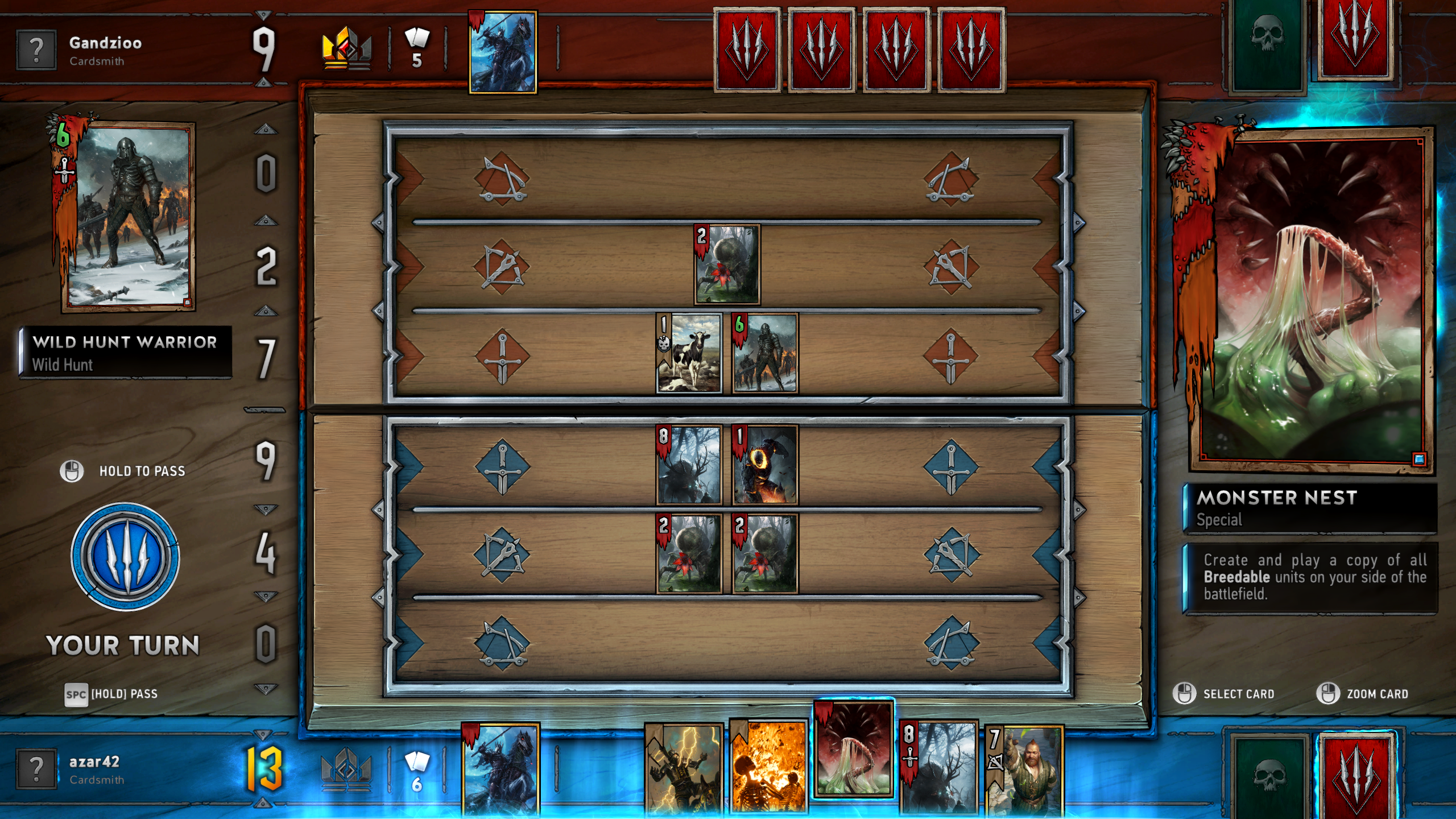
One of the big changes to Gwent since the Witcher 3 days is drawing cards. Before, you got 10 cards and that was that. Now you draw two cards after the first round and one card after round two, if the game lasts that long. I drew an 8 strength card (Caranthir!) that spawned two additional 2 strength cards and cast frost on the melee row, neutralizing his strongest unit. What looked like a close race ended up a strong victory.
The biggest gaming news, reviews and hardware deals
Keep up to date with the most important stories and the best deals, as picked by the PC Gamer team.
This is how the majority of my Gwent matches have ended—even when one player wins with a much higher number, the result usually hinged on one or two crucial plays, not an irreversible accrual of powerful cards. This has kept matches tense and exciting for me as I learn the basics of the new Gwent. And when you dig into the minutiae, there's a lot that's new.
You get a buff, and you get a buff!
Absolutely the biggest change in Gwent is in how many cards do things. In The Witcher 3, you'd have a lot of cards that simply offered a strength value with no additional effect. Those are now far rarer, and many cards buff or debuff other cards when played. This makes Gwent feel a lot more dynamic. For example, a Northern Realms Kaedweni Siege Support adds 3 strength to two units of your choice, while the witch Sile de Tansarville removes 4 strength from an enemy unit.
This feels like an important addition to Gwent for long-term play. The game doesn't feel nearly as static now. But I've also noticed that it seems to significantly reduce the use of weather cards, which drop all strength in a particular row to 1. Perhaps Gwent's meta will evolve to favor weather later, but cards that were played in every single match in The Witcher 3 are now showing up for more specific uses, like buffing a Monster deck's Foglets, who grow stronger when their ranged row is fogified.
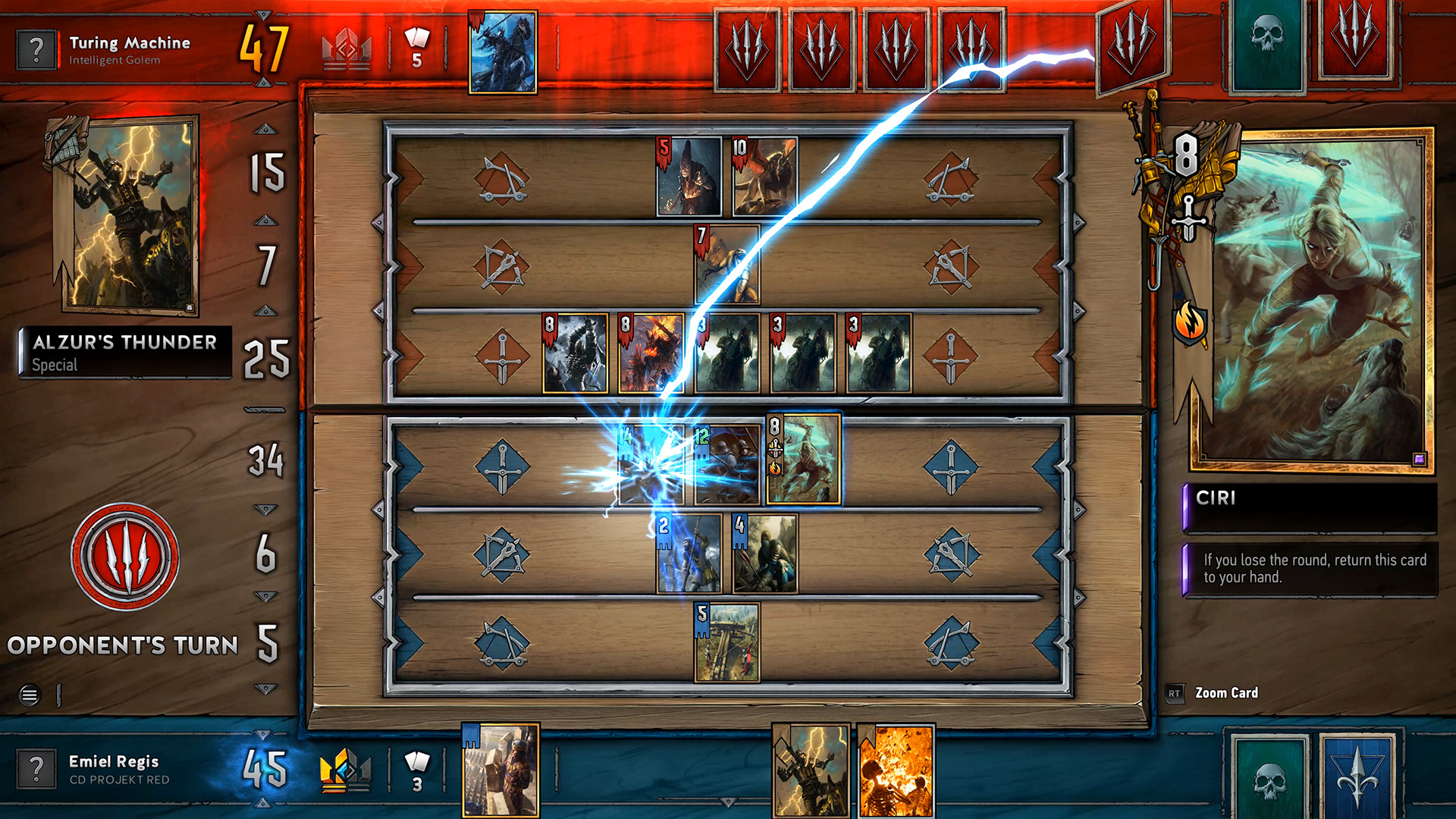
Another big side effect of cards hitting each other for damage: they can die now. Before, cards reduced to a 0 stayed on the board and could potentially be buffed back up. Only a special card like Scorch would fully eliminate them. Now, hitting 0 strength removes a card from the board, which adds all sorts of strategic considerations. Do you take 4 strength away from an opponent's 10 strength card, or "waste" some of that damage on a 2 strength unit that you can kill for good?
This was a shock to the system for me. I think it's a positive change, but it takes some adjustment. So does another big change, which is how these buffs and debuffs are applied.
The effects game has changed
The Commander's Horn was a linchpin card in The Witcher 3's Gwent. It sits next to a row and doubles the strength of every card. Hugely powerful, right? Now the Commander's Horn applies its effects to units currently in the row, but it doesn't stick around to buff any cards later added to the row. There are similar buffs from unit cards—for example, the Scoia'tael Hawker Healer adds 3 strength to all other non-Gold cards on its row.
I'm still not sure how to feel about this change. It means you have to think far more carefully about when you play a Commander's Horn or other row buff. That's good! But it also means that these cards tend to get hoarded till the last possible moment, and that strategy's going to feel stale pretty fast if everyone’s playing it.
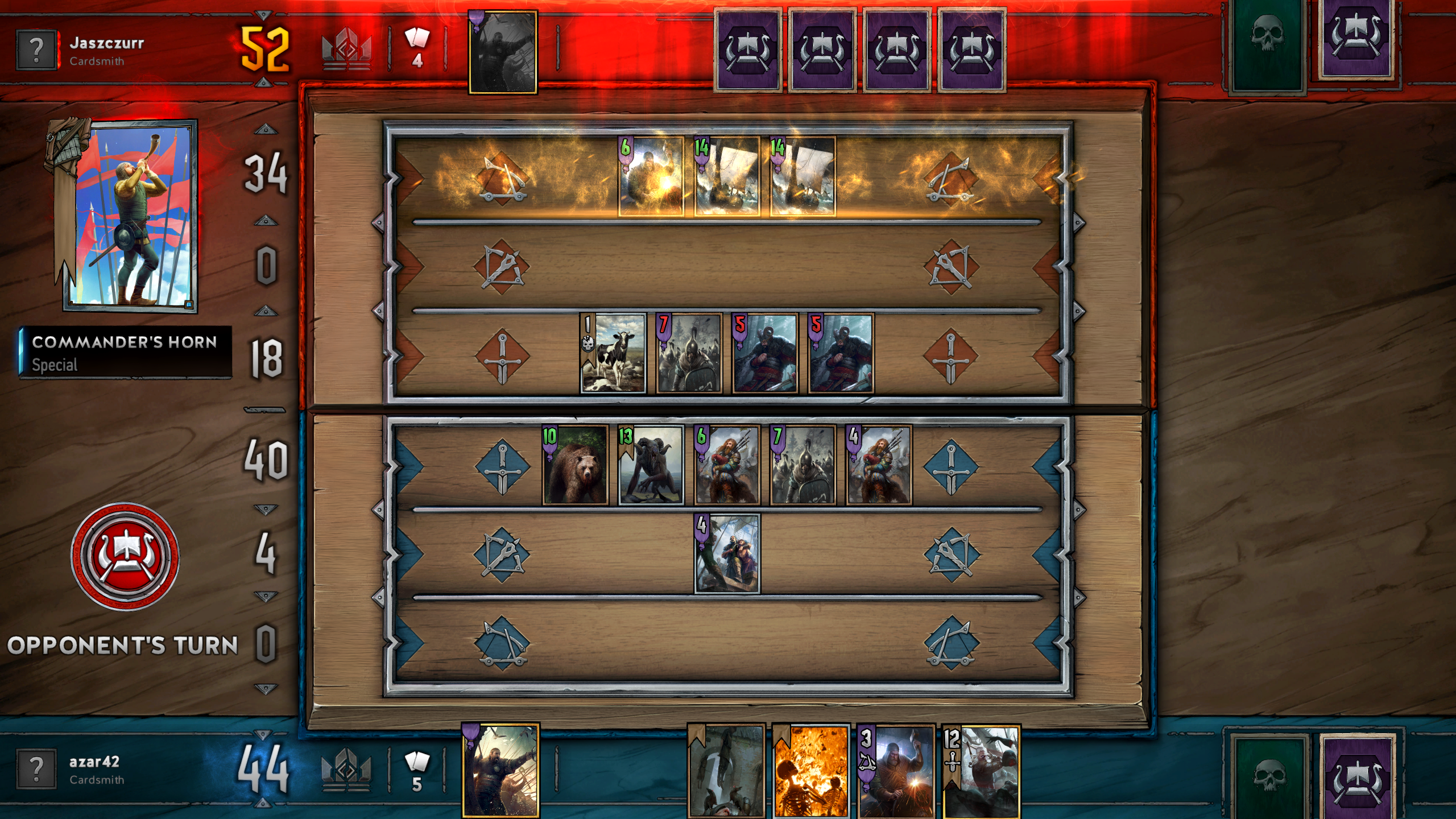
The neutral card dilemma
That's a challenge Gwent potentially faces with all of its neutral cards. Weather effects, the Commander's Horn, Scorch, and other special cards can be played by every faction, and you'll see them again and again playing with the beta's starter decks. I played at least a dozen hours of Gwent in The Witcher 3 without getting tired of these cards, and if the faction-specific cards and accompanying strategies are complex and diverse enough, maybe these neutral cards won't start to feel stale. Or maybe they will end up becoming Gwent’s equivalent of Piloted Shredder—played in every deck to the point of tedium.
Some of Gwent's changes feel designed to address this problem. There are more cards that are immune to (or even benefit from) weather effects. The importance of bronze, silver, and gold cards is rarely relevant in the starter decks, but as more cards are added to the game, I think they will make for some devious strategies. Gold cards are essentially invincible but also immune to buffs, and some cards let bronze units be promoted to gold. At the same time, the Northern Realms faction gives each gold card played 2 additional strength. And then, a twist—at least one card in the beta can downgrade a gold card to silver, making it vulnerable again. I hope to see far more cards built around this dynamic as Gwent unfolds.
What about the economy?
There are a total of 208 cards in Gwent right now, with the Nilfgaard faction yet to be added. I only have 76 of them unlocked, which includes about a dozen or so I've gotten through card kegs, bought by spending ore, the in-game currency. Each keg costs 100 ore or roughly $1.50 in real money (buying in bulk nets you a better price, as usual).
You're not going to be buying card kegs with in-game currency left and right, especially if you lose. There's no XP gain for a loss, and a pittance of five 'scraps' awarded by your opponent if they give you a "good game" commendation. Earning XP levels you up, awarding both ore and another resource used to mill and craft cards. After about five hours of play I have 140 resources to craft cards with. Weak bronze cards cost less than 100, but gold cards and faction leaders can cost as much as 800. So that's going to be a grind.
When opening a card keg, you're guaranteed four basic bronze cards, and then get to choose from 1 of 3 cards—a clear differentiator from CCGs like Hearthstone and The Elder Scrolls: Legends. There's no guarantee those rarer cards will be gold or silver, though.
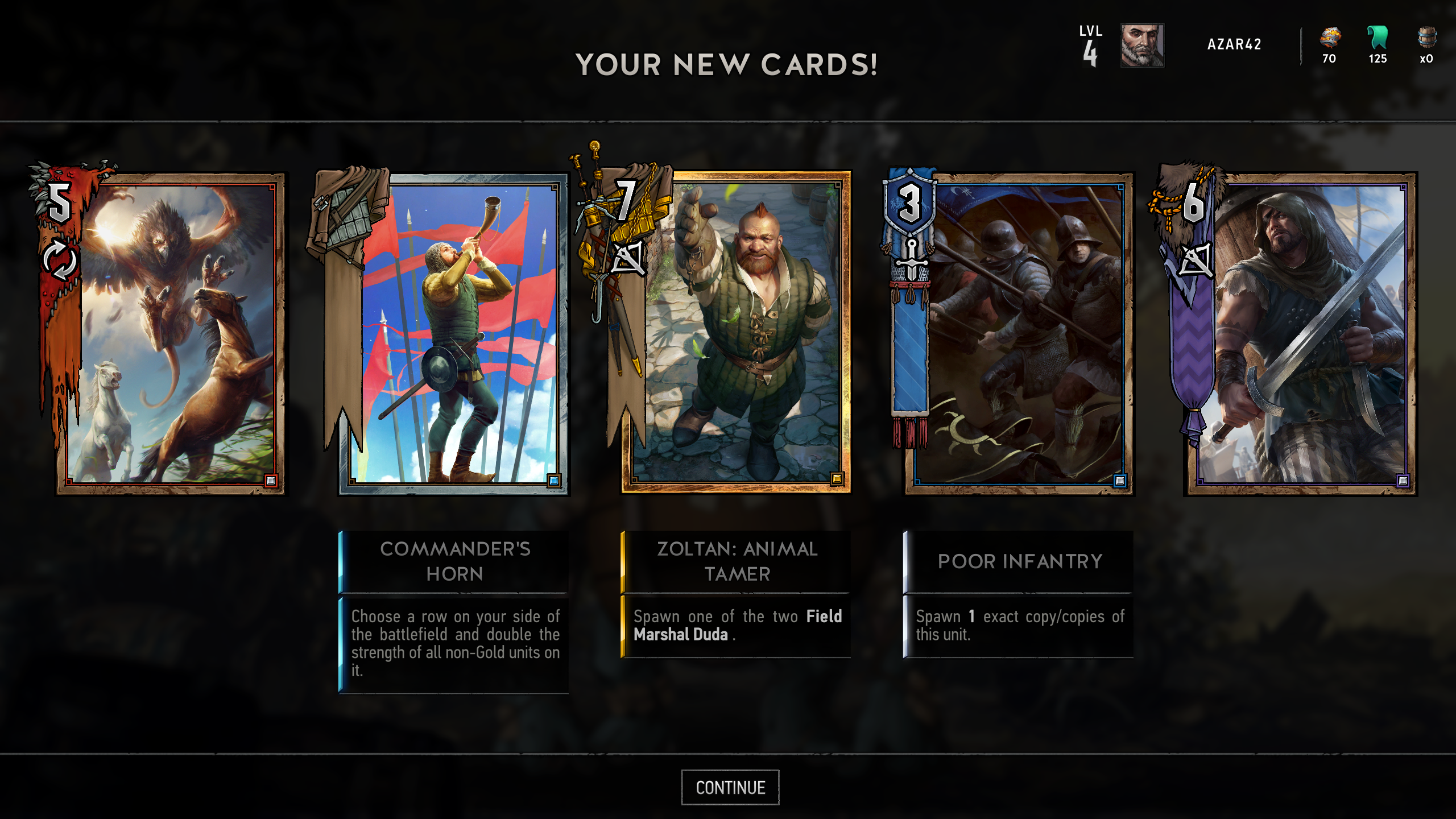
The beta basics
CD Projekt Red's artists have done a wonderful job recreating characters big and small from The Witcher universe. Gwent's 2D illustrations are beautiful, and special animations on gold cards like Geralt's make this feel like a proper digital interpretation of a card game. The menus use bold, large illustrations to launch matches and the deck builder and the shop, and the whole thing just feels clean and snappy. The card borders and playspace have also been refined since the stress test and use simpler iconography more sparingly. It was a good move, and Gwent is already a pretty game, but still needs some tweaks here and there.
The bronze, silver and gold card borders are thin enough to be confused, sometimes—especially bronze and gold. Clicking and dragging cards is well animated but doesn't feel quite as responsive as it should be. In particular, right-clicking to back out of menus can be awkward and sometimes just doesn't work as it's supposed to. Once I got stuck looking through my graveyard, and right-clicking to exit didn't work until the fifth or so deliberate click. Weird.
The deck builder menu uses a sliding row of all available cards along the bottom that shows only a few cards at once, which is a poor way to look through your library. Those cards should be visible in a grid or some other layout. As it stands, this element of the interface, along with some others, feels designed for consoles.
There's also no emote system or way of communicating with other players other than clicking a "good game" button at the end of the match. I don't expect text chat with randoms, but I'd like to see an emote system like Hearthstone's at least allow for some banter (or, more likely, BM).
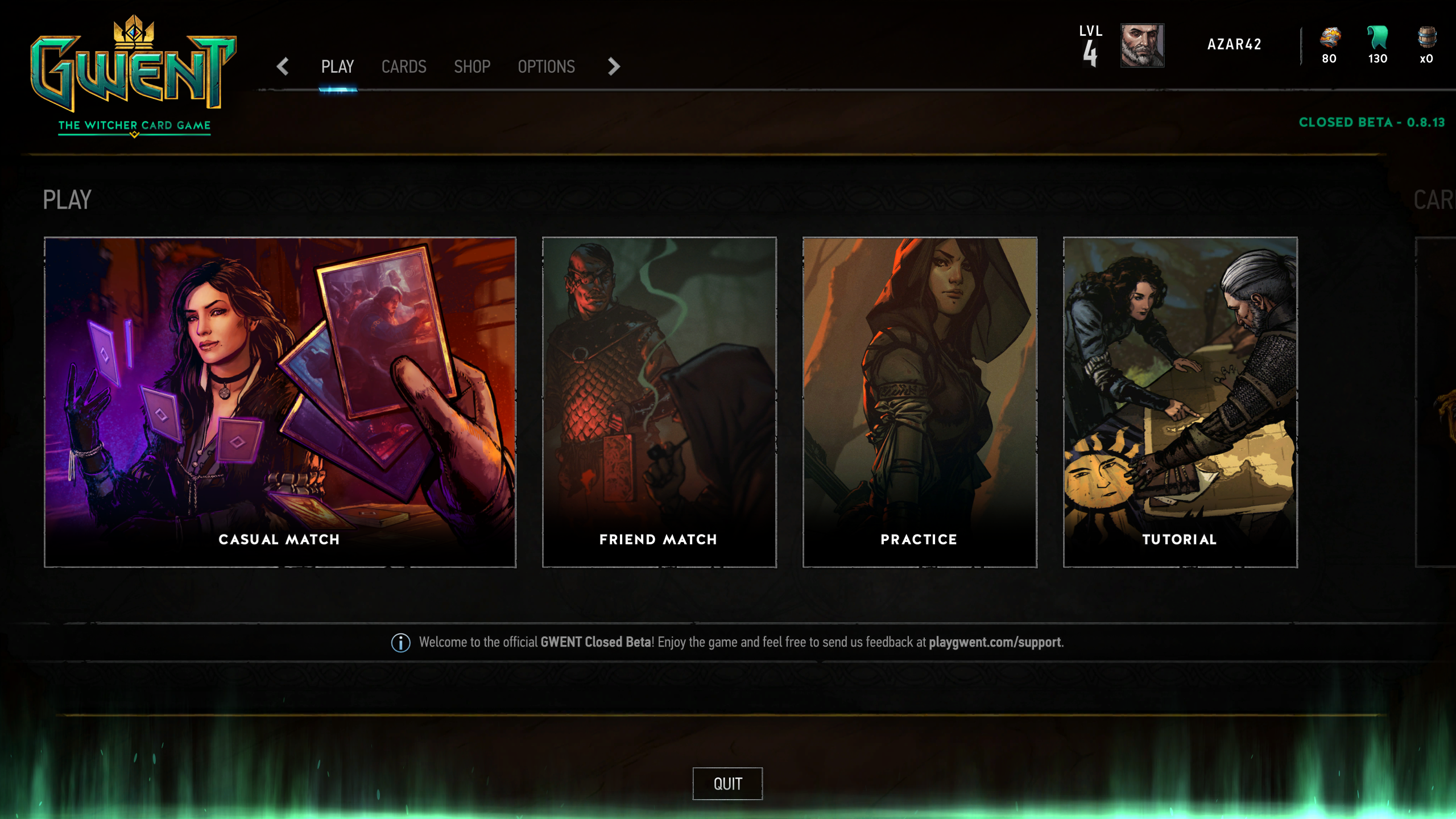
Looking ahead
CD Projekt still has the Nilfgaard deck to add, and I'm sure plenty of balance changes to make, though I haven't faced any broken strategies yet. I hope they improve their deck builder and card collection interfaces to be more efficient, and the lovable troll who sells you card kegs is probably going to get annoying after a few weeks. I'd also love to see a guide somewhere in-game that identifies every symbol and mechanic—that would be a helpful reference for deckbuilding.
More than anything, I'm excited to see what CD Projekt cooks up for Gwent's singleplayer campaigns. Those could bring with them a whole host of new and unique mechanics, and I hope for some puzzle-esque challenges a la the Magic the Gathering games. The beta already proves Gwent is a fun competitive game; with CD Projekt's narrative chops attached to it, it's going to be hard to put down.
For a look back at the origins of Gwent, read our making of Gwent feature from earlier this year.

Wes has been covering games and hardware for more than 10 years, first at tech sites like The Wirecutter and Tested before joining the PC Gamer team in 2014. Wes plays a little bit of everything, but he'll always jump at the chance to cover emulation and Japanese games.
When he's not obsessively optimizing and re-optimizing a tangle of conveyor belts in Satisfactory (it's really becoming a problem), he's probably playing a 20-year-old Final Fantasy or some opaque ASCII roguelike. With a focus on writing and editing features, he seeks out personal stories and in-depth histories from the corners of PC gaming and its niche communities. 50% pizza by volume (deep dish, to be specific).

